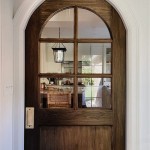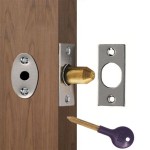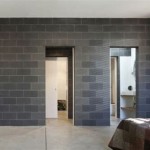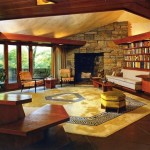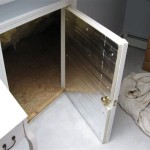```html
How To Interior Design My Bedroom: Ideas and Strategies
Designing a bedroom involves creating a personal sanctuary that reflects individual style and promotes relaxation. The process necessitates careful consideration of various elements, including space planning, color palettes, furniture selection, lighting, and accessories. A well-designed bedroom contributes significantly to overall well-being by providing a comfortable and aesthetically pleasing environment.
Before embarking on any design project, it's crucial to define the intended purpose and desired atmosphere of the bedroom. Is the goal to create a tranquil retreat for rest and rejuvenation, or a more vibrant and multi-functional space that incorporates a workspace or reading nook? Understanding these objectives will guide subsequent design decisions.
Key Point 1: Space Planning and Layout
Efficient space planning is paramount in bedroom interior design. This involves strategically arranging furniture to maximize functionality and create a sense of spaciousness, even in smaller rooms. Begin by measuring the dimensions of the bedroom accurately, noting the location of windows, doors, and electrical outlets. This baseline data will inform the placement of larger furniture pieces.
The bed typically serves as the focal point of the bedroom. Consider its size and optimal placement. In smaller rooms, positioning the bed against a wall can free up valuable floor space. In larger rooms, the bed can be positioned away from the wall, allowing for the creation of a more defined sleeping area. Ensure adequate space on either side of the bed for bedside tables and ease of movement.
Other essential furniture pieces include dressers, nightstands, and wardrobes. Position these items strategically to minimize clutter and maintain an open flow of movement. Consider vertical storage solutions, such as tall bookshelves or drawer units, to maximize space utilization, particularly in rooms with limited square footage. Avoid overcrowding the room with unnecessary furniture, which can create a cramped and overwhelming atmosphere. Aim for a balance between functionality and aesthetics.
Consider the placement of electrical outlets when planning the layout. Strategic placement of lamps and electronic devices are important for convenience and to avoid the need for extensive extension cords. If possible, consider adding or relocating outlets to better suit the planned furniture arrangement.
Key Point 2: Color Palette and Ambiance
The color palette plays a significant role in shaping the ambiance of the bedroom. Colors evoke different emotions and can influence mood and relaxation. Lighter, cooler colors, such as blues, greens, and grays, tend to create a calming and serene atmosphere, ideal for bedrooms intended for rest and sleep. Warmer colors, such as yellows, oranges, and reds, can create a more vibrant and energetic atmosphere but should be used judiciously to avoid overpowering the space.
Consider the existing architectural features and natural lighting when selecting a color palette. Rooms with limited natural light may benefit from lighter, brighter colors to maximize the diffusion of light. Rooms with ample natural light can accommodate darker or more saturated colors without feeling oppressive. The color of the walls can be complemented by the color of the bedding, curtains, and other accessories.
In addition to wall color, consider the use of accent colors to add visual interest and depth to the room. Accent colors can be incorporated through throw pillows, artwork, rugs, and other decorative items. A well-chosen accent color can tie together the various elements of the room and create a cohesive aesthetic.
Texture also contributes to the overall ambiance. Incorporating different textures, such as soft bedding, plush rugs, and woven baskets, can add warmth and depth to the room. Experiment with different tactile elements to create a multi-sensory experience that enhances relaxation.
Key Point 3: Lighting and Accessories
Lighting is a crucial element in bedroom interior design. A well-lit bedroom should incorporate a combination of ambient, task, and accent lighting to cater to different needs and activities. Ambient lighting provides overall illumination for the room, while task lighting provides focused light for activities such as reading or getting dressed. Accent lighting highlights specific features or artwork in the room.
Consider using a combination of overhead lighting, bedside lamps, and floor lamps to create a layered lighting scheme. Dimmable lights offer flexibility in adjusting the brightness level to suit different moods and activities. Natural light should also be maximized by using lightweight curtains or blinds that allow natural light to filter into the room.
Accessories are the finishing touches that personalize the bedroom and reflect individual style. Artwork, photographs, plants, and decorative objects can add character and visual interest to the space. Choose accessories that complement the overall color palette and theme of the room. Avoid cluttering the room with too many accessories, as this can create a sense of overwhelm.
Rugs can define different zones within the bedroom and add warmth and texture to the floor. Choose a rug that is appropriately sized for the space and complements the overall color palette. Curtains or blinds can provide privacy, block out light, and add a decorative element to the windows. Consider the fabric, color, and style of the curtains to ensure they complement the overall design of the room.
Mirrors can be used to create the illusion of space and reflect light, making the room feel larger and brighter. Position mirrors strategically to maximize their impact. A large mirror on a wall can visually expand the room, while smaller mirrors can be used to highlight specific features.
The incorporation of personal items, such as family photos and travel souvenirs, can make the bedroom feel more personal and inviting. Arrange these items artfully to create a curated display that reflects individual interests and experiences. Remember to prioritize creating a space that promotes relaxation and rest.
The selection of bedding is paramount in creating a comfortable and inviting sleep environment. Choose high-quality bedding made from natural fibers, such as cotton or linen, which are breathable and gentle on the skin. Consider the thread count and weave of the fabric to ensure comfort and durability. A well-chosen duvet or comforter can add warmth and style to the bed. Don't forget the decorative throw pillows and blankets!
Implementing these strategies systematically and thoughtfully will lead to a bedroom design that is both aesthetically pleasing and conducive to relaxation and rejuvenation. Regular evaluation and adjustments to the interior design will ensure that the bedroom continues to meet evolving needs and preferences. Each element contributes to the overall goal of crafting a personal sanctuary.
```:max_bytes(150000):strip_icc()/kendallwilkinson-29884cbad37a46e89d84d3d3483a8b23.png?strip=all)
How To Decorate A Bedroom

60 Diy Bedroom Makeover Ideas

30 Stylish Bedroom Wall Decor Ideas And Tips

18 Master Bedroom Design Ideas To Create An At Home Escape Decorilla Interior

2025 Bedroom Trends For Ultimate Rest Relaxation Decorilla Interior Design

Large Bedroom Design 10 Smart Solutions For Spacious Rooms Decorilla Interior

65 Beautiful Bedroom Ideas For A Cozy Escape

21 Insanely Cute And Practical Small Bedroom Ideas Stylin By Sarita

How To Decorate A Bedroom With Neutral Colors Sanctuary Home Decor

2025 Bedroom Decor Ideas And Inspiration For Master Small Bedrooms Jane At Home
Related Posts

